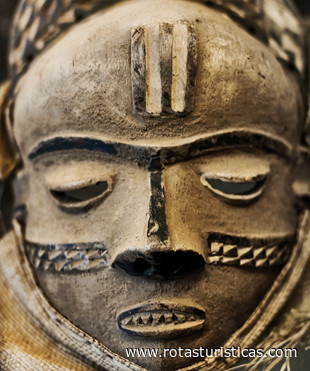Namur, Namur, Belgium
Suggest Place to Visit
3096
Track to location with GPS |
 |
The African Museum of Namur (MAN) is a Belgian museum in the Walloon region which has a collection of African objects and European objects from the French colonization of Africa. For obvious historical reasons, most of the collections relate to the territory of what is now the Democratic Republic of the Congo.
Created in 1912, and others have come out, the museum was installed after 1984 in the former houses of the National Gendarmerie in Namur. Current collections of the military history of the Belgian Congo and ethnographic objects from the colonial colonies of Belgium. The proposal also includes a library of 20,000 listening techniques linked to the Belgian presence in the Congo and elsewhere in Africa.
Freshly nationalized in 1908, the Belgian Congo aroused popular enthusiasm, in Namur as elsewhere. The Treaty of Berlin in 1885 opened the way for the conquest of new territories in the heart of Africa, sharing the areas of influence of the great European powers. When the explorer Henry Morton Stanley holds possession of a territory the size of Europe, does so on behalf of the King of the Belgians, Leopold II. After two decades, I joined the Congo to Belgium in 1908, one before his death. During the Leopoldian era, several militia campaigns were waged against Muslim slavery, still ongoing on the east coast of Africa, which hampered the economic development of the colonized Congo. For soldiers and religions, more than that. Finally, in 1897, the Universal Exhibition in Brussels presented the colonial pavilion in Tervueren, the embryo of the future Royal Museum for Central Africa.
In this context, she joined the Society for Colonial Studies and Interests was founded in Namur in 1910. This, the agency for the promotion of colonies and public institutions, the decade of the creation of a museum years later. Unfortunately, the German bombing of 1914 destroyed all of the young collections housed in the former grain exchange next to the Town Hall.
For the Colonial Exhibition of 1925, a new museum was born, a shelter in the battles of the Royal Athenaeum, in the historic center of the city. This colonial school museum led, in 1934, to the creation of the National Museum of African Art, located in Grognon. One more, more during the war bombings destroyed all the collections.
Since 1951, a new museum has heard these public grandeur, it was located in Jambes, and the colonial museum in Jambes. The moved several were, just in 1977, participating in a better kind, the collections are put away in boxes, stored in various places of the commune. This is what 1984 was installed in the current premises of Leopold barracks. Unique in its kind in the Walloon Region, the new African Museum of Namur (MAN) until its inauguration in 1985.
The Leopold barracks are the former premises of the national gendarmerie. The building, built in 1883, has a romantic aspect of medium interest. The central entrance porch separates two side wings, flanks of square to quadrular towers. The apparatus, if divided between brick and freestone, do not use the appearance of a fortress: bevelled, window embrasures, false battlements and drip edges underline a defensive aspect. The phenomena flow into solid bars, due to the open doors that are part of a geometry, available in the central extension of the body.
The collections of the museum mainly among two types, according to their geographical origin. European objects mainly bring together elements of the colony's military history: weapons, equipment, uniforms and flags. They present military operations to colonization at the end of the 19th century, even though men against the army or their allies in world wars. The African collections are mainly of Congolese origin, comprising weapons, furniture, ritual objects and what is called "airport art", alongside mineral and animal specimens - notam part of the collection of taxidermy of Marshal Mobutu. The whole is punctuated by many explanatory panels in French, presenting the genopolitical and historical context of the rooms. The content of the reserves, three rarely accessible to a public informed, deserves special attention.
The museum is located 500 meters from Namur train station, and it was served by a bus stopping rue du Premiers Lanciers. A small adjoining car park is accessible through the entrance porch, although the large communal barracks car park, just behind.
The museum is open Tuesdays and Thursdays, even on Sunday afternoons; access for people with reduced mobility and facilitated by the presence of beef ramps; the whole museum is simple except the library.
Comments
We don´t have yet any comments about:
African museum
African museum
Be the first to leave a comment as it is very important to inform other people
Outros locais a visitar
Within a radius of 20 km from:African museum
Unfortunately we do not have information on other places to visit in this area yet
Hotel reservation near African museum within a radius of 20 km
Why to book with CLUBE TRAVEL
The best prices
Our partnerships with the world´s largest operators offer research on the best market prices.
More options
At Rotas Turisticos you can book the hotel, buy the air ticket, book the transfer from the airport to the hotel and vice versa, book the local excursions, rent the car, take travel insurance and consult the places to visit and where to go.
Holiday Tips & Destinations
Hundreds of holiday destinations with all the options that allow you to easily choose the destination that best suits your dream vacation.
CLUBE TRAVEL
Links






